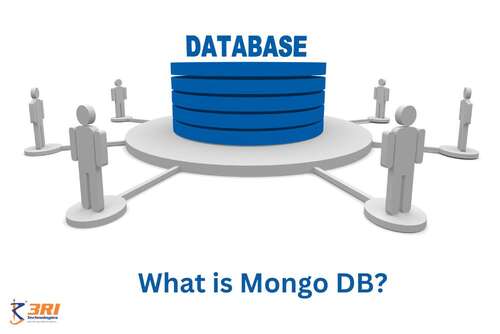A document database called MongoDB is used to create ever-available and expandable websites. Its method of handling schemas is well-liked by agile development teams. All popular programming languages have drivers for MongoDB, allowing you to start developing your application immediately without waiting for the database to be set up. Follow this blog to learn everything about MongoDB, such as what it is, what MongoDB is used for, why to use MongoDB, and so on.
Are you asking, what is MongoDB? Let us with ease. For hands-on experience, our Mongodb Training In Pune offers expert-led instruction. mongo db explain: it is a powerful NoSQL database built for modern, data-intensive applications. Understanding what is mongodb used for reveals its versatility. The primary use of mongodb is to handle large volumes of unstructured data with speed and scalability, which is why mongodb is used by developers worldwide. The list of mongodb uses is constantly growing
Why Use MongoDB? Key Advantages Explained
MongoDB is a NoSQL database that contains vast amounts of data. MongoDB employs collections and documents instead of typical relational database tables and rows. Key-value pairs are MongoDB’s fundamental unit of data, and they comprise documents. In that they include groups of documents and functions, collections are analogous to relational database tables.
PHP, Perl, and C/C++ are some of the languages that can be used with MongoDB. MongoDB can also be connected to Node JS.
But even if you look at all the problems with traditional databases and all the good things about MongoDB, you still have to admit that tasks are different, and so are the ways to solve them. In some situations, like when you need to store data with a complicated structure, MongoDB will make your application run much faster. If not, it might be better to use relational databases that have been around for a long time.
How Does It Work?
Records are used in MongoDB, documents with a data structure of field-value pairs. MongoDB stores information mostly in the form of documents. The documents are written in a format called Binary JSON (BSON), which is similar to JavaScript Object Notation. A benefit of using BSON is that it can process a wider variety of data types than similar formats. Comparable to the fields in these files are the columns of a relational database. The values can be anything from other documents to arrays to arrays, as stated in the MongoDB user guide. To ensure that all documents are properly identified, we will additionally employ the primary key.
Comparable to tables in a relational database, collections are organized sets of documents. All sorts of information can be part of a collection, but it can’t be spread among several storage systems.
You’ll also get the mongo shell when you download an open-source version of MongoDB. Users hook up their newly installed instances of MongoDB to the mongo shell. The mongo shell is a JavaScript front-end to MongoDB that facilitates data querying, editing, and management.
Comparable to tables in a relational database, collections are organized sets of documents. Any information may be included in a collection, but that information must all be kept in one central location.
All publicly available MongoDB distributions provide the mongo shell. Users hook up their newly installed instances of MongoDB to the mongo shell. The mongo shell is a JavaScript front-end to MongoDB that facilitates data querying, editing, and management.
Learn Mongo DB at MEAN Stack Course in Pune.
Why Use MongoDB?
Scale-out architecture, which MongoDB is based on, is becoming increasingly popular among developers because it makes it easy to build scalable systems with growing data schemas.
MongoDB’s document database architecture makes it simple for developers to store both structured and unstructured data. Files are saved in a format that is very close to JSON. As a result, this format maps to native objects in most of today’s programming languages without needing any data normalization on the developer’s part. Since it is scalable, MongoDB can manage ever-increasing or decreasing data volumes under heavy loads.
Those who create web and business systems that must scale and evolve without breaking are the target audience for MongoDB. MongoDB is used extensively by organizations of all sizes and development teams of all stripes.
- Get Started Right Away – Developers have a great time using MongoDB because they can install the database and write code immediately.
- Scalable – Massive amounts of data and traffic may be managed using MongoDB’s horizontal scale-out architecture.
- Model of Document – To get and store information quickly, developers can take advantage of the document data format, which works with any modern programming language.
- Options For Deployment -Through MongoDB Atlas, you can access MongoDB on all of the most popular public clouds, including Amazon Web Services, Microsoft Azure, and Google Cloud Platform. Large data centers often stock the paid Enterprise Advanced edition, while anyone can download and use the open-source Community edition at no cost.
- Locate Community – To support its extensive platform ecosystem, MongoDB has worked hard. Support is readily available because of its extensive network of developers and specialists worldwide. There is also help for larger organizations.
With MongoDB, your team can get more done and work faster while making software applications that can handle all kinds of data in a scalable way.
MongoDB is an excellent option if you must: Support rapid, self-replicating development. Make it possible for multiple teams to collaborate. Scale up to accommodate heavy read and write traffic. Your data repository must have significantly more data. Change the strategy for deployment as the business changes. Data storage, management, and searching for text, geographic, or time-series data.
Because there are more and more use cases with these qualities, MongoDB has expanded as an organization.
What Features Does MongoDB Offer?
MongoDB is a great database because it is a NoSQL database. This technology is unique and appealing because it has these great features. Also, these features make MongoDB very popular and easy to use.
Let’s examine several MongoDB features that will facilitate our work with it.
- Schema – Less Database – In MongoDB, different documents are all stored in the same collection. It doesn’t have a schema, so its fields, content, and size can be very different from other documents in the same collection. Because of this, MongoDB can deal with databases flexibly.
- Document – Oriented – MongoDB is a document-based database, a fantastic feature in and of itself. The data in relational databases are arranged in rows and tables. Each column in a row can carry a specific kind of data and has a specific number of columns.
Herein lies the versatility of NoSQL, which utilizes fields rather than tables and rows. Different types of information can be stored in various papers. There are groups of identical documents. The user or system can assign a key id or object id to each document.
- Ad – hoc Queries – Typically, we don’t know what queries will be run in advance when designing a database’s structure. Since ad hoc queries were unknown during database design, they had to be accommodated for later.
What makes MongoDB so unique is its ability to execute queries in real-time. Speed improvements have been made to ad hoc queries thanks to real-time data updates.
- Replication – With MongoDB, redundancy is achieved through a process called replication. As its name suggests, this feature sends data to several devices. A primary network may have one or more replica sets. Replication is all about being ready for the unexpected.
If the instance’s primary node is down, the secondary node takes over as the primary node. This reduces the need for repairs and makes daily operations more streamlined.
- Indexing – Improving the efficiency of search queries relies heavily on indexing. Repeated searches require indexing the document’s fields that match the search terms used.
Primary and secondary indices are available for indexing any field in MongoDB. Indexing enhances MongoDB’s performance and speeds up queries.
- Sharding – The idea of sharding comes into play when we have to cope with bigger datasets. When a query comes for them, these huge amounts of data can cause some trouble. This feature makes it possible to send this troublesome data to more than one MongoDB instance.
The bigger collections in MongoDB are broken up into more than one collection. “Shards” is the word for these groups. Clusters are what make shards work.
- Aggregation – MongoDB has a framework for aggregation to facilitate effective use. We can conduct many operations on a data set and still obtain a single result by processing it in bulk.
The aggregation pipeline, map-reduce function, and specific aggregation techniques are three primary strategies for furnishing an aggregate framework.
Learn Mongo DB and get placement assistance with MEAN Stack Online Training.
Why MongoDB Over Sql Is Preferred?
MongoDB is a more sophisticated database that can manage large amounts of data and has capabilities that allow for dynamic schemas. SQL Server is a relational database management system (RDBMS) that offers complete business data solutions and administers the relational database system. When dealing with unstructured data, MongoDB is a smart option to go with. Additionally, because it is open source, MongoDB is easily accessible to users. Thus MongoDB Over Sql is utilized more.
What Exactly Is Data Modeling in MongoDB?
Data modeling is figuring out how information is stored and how different parts of our data are linked.
Data modeling aims to show how different data pieces relate to each other visually. It also tries to show how the data is organized and put into groups.
Data Modeling Types in MongoDB
MongoDB offers the following two data modeling options:
1. Embedded Documents
2. References
1. Embedded Documents
Embedded documents store relevant data in a single document structure to demonstrate the relationship between the data. In MongoDB, document structures can be saved in a field or an array.These denormalized data models make it possible for applications to get and change related data in one database operation.
The denormalized data model in MongoDB is the best for many uses.
Pros of Embedded Documents:
When we embed documents, we can read and change data in a single database operation, which speeds up the process.
Cons of Embedded Documents:
- It can result in duplicate data.
- MongoDB documents can be up to 16 MB, so care must be taken when putting them inside other documents.
When Should You Use Embedded Documents?
When to use the embedded documents:
- A “contains” or “has a” relationship exists between entities.
- There is a one-to-many link between the entities.
2. References
References keep track of how different pieces of data are related by putting links or references from one document to another. Applications can use these references to find the data that goes with them. These are, in a broad sense, normalized data models.
Pros of References:
References offer the following benefits:
- No data duplication
- It can depict more intricate many-to-many relationships.
- Capable of representing hierarchical data
Cons of References:
Since the related data might be in different documents, we need one of the two to get all the related data. Either we need to do several database operations or join several collections together. We also need more than one database operation to write related information in more than one document.
When Should You Use References?
Refer to the References when you desire to:
- Data sets with hierarchies to model
- Represent ties between several people
- When the effects of the data duplication do not outweigh the read speed benefit from using embedded documents.

What Is The Use of MongoDB?
MongoDB is an industry-agnostic database that supports applications in various sectors (e.g., telecommunications, gaming, finances, healthcare, and retail). MongoDB has found a home in various organizations and functions due to its ability to solve long-standing data management and software development issues. Typical MongoDB use cases include:
- Describing Evolving Complicated Data Structures – Document databases permit the embedding of documents to represent hierarchical structures and readily accommodate data fluctuations between document generations. Support for specialized data formats such as geospatial is efficient. If something changes, this results in a repository that does not break or requires redesigning.
- Delivering Data In Apps With High Performance – The scale-out architecture of MongoDB can handle a very large number of transactions on very large databases. Because of how it was made, MongoDB has a clear path to scalability, while other databases either can’t support such a large scale or can only do so with a lot of engineering and extra parts. MongoDB is already set up to grow.
- Providing Support For Hybrid And Multi-Cloud Applications – MongoDB can be installed and run on a desktop, a vast cluster of computers in a data center, or in a public cloud, either as installed software or as a database-as-a-service product called MongoDB Atlas. If you have apps that need to operate wherever they make sense, MongoDB now and in the future supports any setup.
The Bottom Line
In summary, MongoDB is an all-purpose database that can facilitate application development. With its scalability and flexibility, it can aid in the development of more future-proof applications. It provides an exceptional development experience with drivers for most major programming languages and a big user community. It is also accessible through all of the main cloud service providers. 3RI Technologies offer complete practical training with industry experts.





